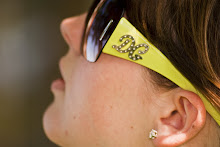WILKS, J., CUTCHER, A., & WILKS, S. (2012). Digital Technology in the Visual Arts Classroom: An [un]Easy Partnership. Studies In Art Education, 54(1), 54-65.
An [un]Easy Partnership: Digital Technology in the Visual Arts Classroom
The article describes several ways that engaging in ICT in art education is an easy partnership. Specifically, it gives students a new way to explore different concepts, forms, and conceptual frameworks. It can also integrate strategies and applications in hot visual arts professions such as 3D modeling, graphic design, and desktop publishing. It opens up opportunities to create movies as an art form, take virtual field trips to art museums, and sharing student work digitally. Art making on digital devices, such as iPads, can also help break down barriers for some students who struggle to succeed with traditional art media. The fact that the technology can do so much of the work frees students up to experiment freely, correct mistakes easily, and create deeper meaning within the work rather than just focusing on perfecting the performance of the medium being used.
As far as challenges in integrating digital technology, the article describes four. The first one is the challenge of relevance and benefits. There are many art teachers who struggle to see the benefit of integrating new technology. They might not see the purpose of it or feel that drawing and painting on an electronic device would not be as authentic of an experience as drawing or painting in reality. There seems to be some dissonance between technology and the tactility of the creative process. The next challenges they discuss is that of time, an already crowded curriculum, and inadequate resources and support. Without the right kind of professional development, all the ICT in the world could do no good in any classroom. Sadly, specific professional development for art education is very rarely provided within a local school system simply because there is such a small population of teachers who it would actually effect. Educators also claim, "there is insufficient time to critically explore the medium and critically analyze artists who use this medium because of the myriad demands in their subject area." (Wilks 61) Lastly, they discuss the challenge of access and restrictions. If there is only one or two computers available to students in the art room, there is precious little students can do to create art in a meaningful way.
I can relate to this challenge. Seeing students just once a week for a 45 minute block does not feel like nearly enough time to cover everything sufficiently. There are tons of media to explore, art history to cover, famous artists and art styles to discuss, elements, principles, drawing practice, the list goes on and on. It is scary to even think of all that but considering adding even more with few resources seems more like torture for the teacher than benefit for students.
There are some neat resources offered in the article to help ease art teachers into technology and with the potential for an art and tech partnership being nearly limitless, there are tons more. So despite the challenges, it is important to embrace what technology that is available to us as art teachers and work to integrate it in art study as well as art creation. It is a gradual work but it is a necessary move for art education. In my classroom, I am slowly working toward integrating the iPad carts we have available at my school. It is certainly a challenge to say the least but I am very excited about the possibilities. There are lots of times when things don't work out and nothing seems to have gotten done but I think students are still benefiting from the exposure whether it works out completely or not.




3 comments:
Heather...it was a very good post because I am not familiar with what art teachers go through. I see that that challenges exist for all teachers in that money, professional development, and time is some of the biggest roadblocks. It would make things so much better if training for all in the area of properly integrating technology would go a long way. Find out from each teacher what technology tools needed in their class curriculum and develop professional development around that or if there were a Professional or Teachers Learning community established that might help to discuss with other teachers what they use and how effective the tools they implement are in their room. Thanks for sharing...!
For every movement there is a countermovement. Out of SMU we see a push to diminish the presence of electronic technology in classrooms as a means of teaching focus, presence, and connection with the art and each other.
And yet...
And yet...
At the very least, we need more time with the children.
Post a Comment